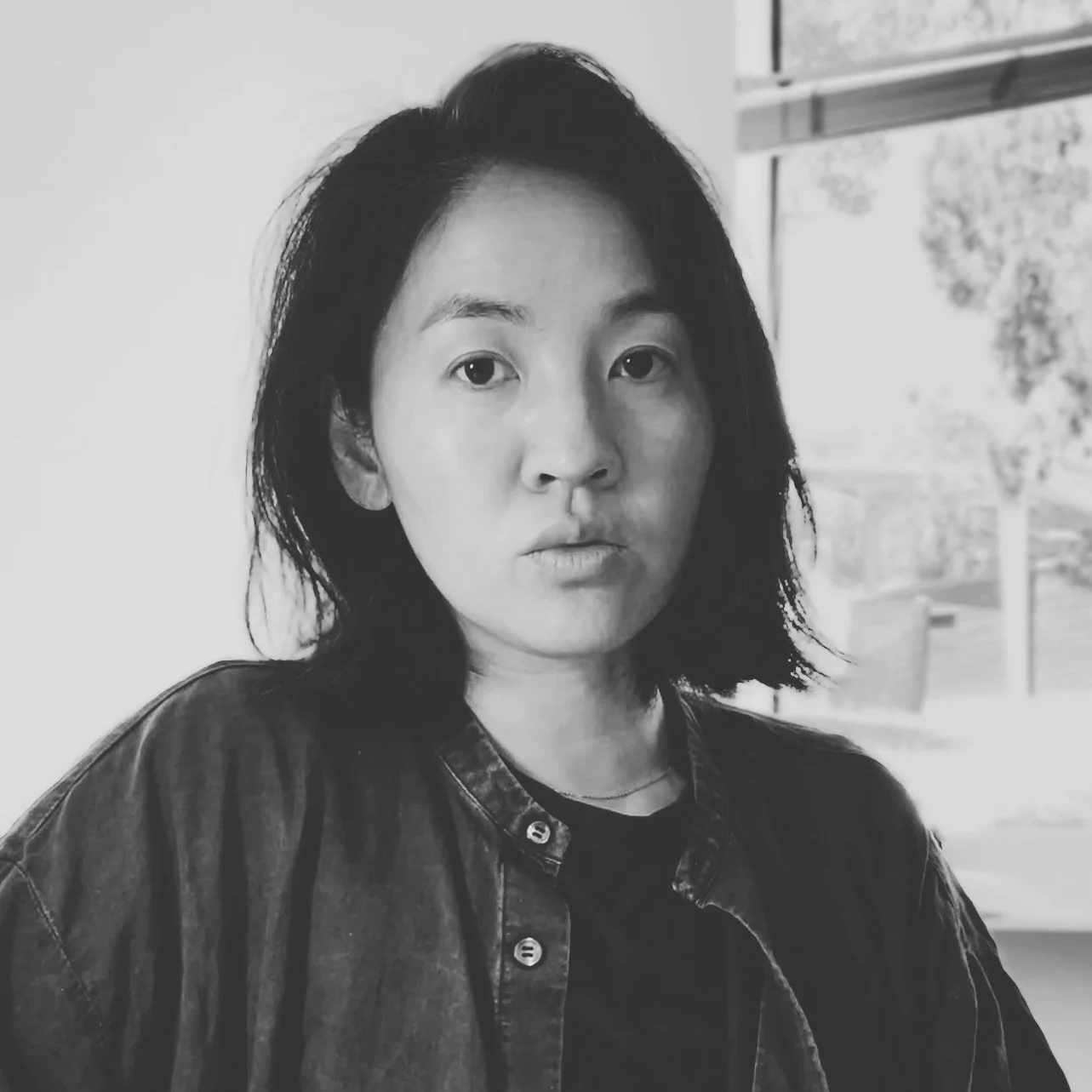Sue Huang
Hallucinations, Divorce
It is one week into the new year, and I am watching images of Los Angeles as it burns. I talk to a friend who lost everything in the wildfires except two guitars. He is grieving over all of the objects that burned up in the fires. All of the objects that carried his memories are now ashes.
I try to comfort him. I say, “The objects are not important. The important thing is that you are safe.”
But even as I say it, I doubt my own words. Objects, after all, are the receptacles of memories. They hold experiences, moments, and fragments of feelings. Without them, memories reside only in our bodies and minds. And when the mind goes, and then the body, what becomes of our memories if there is no object to hold them?
In the summer of 2022, I was not married but not quite divorced. After a year of watching our marriage therapist sweep his hands around in figure-eight loops—“You two are stuck!”—my husband and I had finally agreed to divorce.
Legally married but no longer a couple, separated, but not yet officially divorced, in this in-between land of living together but not sleeping together, we would sit on the sofa, shoulders slouched together in silence, watching Seinfeld reruns and sharing the occasional joint on the balcony. Our marriage was dying a slow, but deliberate death. So I took my daughters and made an escape to my parents’ home in Oregon to reassess my life choices.
I am in the living room in Oregon with my mother gazing at the China cabinet. “Take this,” she says, handing me tchotchkes and crystals from the cabinet, “and this… And this.” I receive these offerings—the German serving spoon, the Lladro porcelain sculpture of a girl holding a collapsed umbrella.
“Remember?” my mother says. “We got her in Spain when you were a teenager.” As she attempts to rid herself of these objects, she comments on each. Each thing, accompanied by a memory. Each memory, accompanied by a sigh.
My father’s hallucinations are a glitch. But they hold something useful too. Inside the glitch, time slips. One person becomes another, generations collapse, memories merge.
My father meanwhile sits in his armchair gazing at the river. Over the past decade, Parkinson’s has consumed his body, and over the years it has taken his mind.
“Sue?” he calls out, as he looks over at my oldest daughter. “No, Gong Gong, it’s me,” she replies. He speaks to companions we cannot see, laughs at words we cannot hear. For us, there is no sudden unexpected loss. Instead, our story is one of a long decline—of watching him pass slowly, from this land to the next. And in that in-between space—in that limbo between our world and that world—the first signs are in his hallucinations—the invisible grandchildren, the missing friends. In his memories, do I have a daughter, or perhaps, two? Or is it my brother? Or my brother’s daughter? No father, he does not have a daughter.
I once attended a symposium on artificial intelligence. Among the usual lineup of presentations, weak coffee, and brittle cookies, I half-listened to discussions about the future of AI, the legalities, the creative potentials, the pitfalls. I was drifting when a presenter pulled up a slide that caught my attention, “These are AI hallucinations—false, misleading, or nonsensical outputs from the AI. Hallucinations are considered undesirable artifacts to be removed.”
I looked at the image on the screen. So many fingers…too many fingers. And limbs that, on closer inspection, folded into themselves like a Möbius strip. He continued, “But what if there is something interesting that can be found in the hallucinations? What if there is something in there that is useful for us.”
I have been ruminating on this thought ever since. My father’s hallucinations are a glitch. But they hold something useful too. Inside the glitch, time slips. One person becomes another, generations collapse, memories merge. They melt together and take on new forms, some recognizable, and others like distortions. Like peering through a thick glass bowl, the image elongates along the edges. Inside the glitch, linear time dissipates, and all things may exist at once. I am my daughter, my brother is me. I am seven years old sitting on a large rock eating a popsicle under the Saudi sun and I am 45 driving to work over the Verrazzano listening to WNYC.
After the divorce, I started dating someone. He was a new someone. He was also an old someone. We had a “thing” in our 20s and were now in our 40s, and making a second go of it. A second go that included in the setup of our lives, exes, children, a dog and a cat. But no one knew about us except the dog and the cat. And they weren’t telling. Twenty years had passed, but sometimes it felt like we were in one of my father’s hallucinations, and I would wonder if any time had passed at all. I would look for signs—the skin, the creases near his eyes, the hollows of his cheekbones. In our youth, his hair was long, but in this new configuration, it was short. Running my fingers through the threads of his hair felt like slipping through time.
Sometimes, I think sex when you are older is better because you are closer to dying. Every breath then is like a prayer; every touch, proof that you are still alive.
Last summer, I went to an artist residency in the mountains of Northern California. I was there ostensibly to work on a video animation, but instead, as I hiked around the property each day, I found myself thinking only about clay. On a hot summer day, as the marine layer dissipated, the other residents and I walked along the creek bed—shoeless, watery pebbles underfoot, a bucket in one hand and a broken shovel in another. We discovered a bed of clay along a small cliff, directly under an old redwood tree. The clay was thick and impenetrable and the shovel made no headway. The claw end of a hammer did better, and with it we extracted many gallons of the earth and brought them back to our studios.
Clay lies in the subsoil. It is made up of minerals with dainty names that belie their weight—silica and alumina, titania and zirconia. There is a kind of magical alchemy that transforms clay into ceramics. As temperature rises in the kiln above 1,000 degrees Fahrenheit, the clay vitrifies, melts, and then fuses into its final form. In this form, it can durably hold our memories as dishes and bowls, and small Spanish figurines of girls with collapsed umbrellas. These objects speak to us, they tell our most personal stories.
In the ground, clay can also hold other kinds of memories. In the sedimentary layers of the earth, it captures memories of bones, feathers, shells, and teeth. Fossils tell stories—stories of lost bodies and past ecologies. Just as we have objects that hold memories, so too does the earth. Bones and soft tissues are embraced by the bacteria, the worms, and the fungi. They shapeshift into air and water. These once living things and I exist simultaneously in all our forms and times. In this hallucination everything is possible. We are sinking into the undersoil. The line between life and death is thin. It is so thin, it’s practically invisible.
I take a photo of my father with my youngest daughter. They sit on chairs next to each other. She smiles at the camera. Her smile is bright and wide, and you feel her total presence in her body. My father’s eyes are looking at some point far beyond the camera, far behind me. His body is still here with us, but his mind—it is departing.
Sue Huang
Sue Huang is a new media artist whose research explores ecological intimacies, human-nonhuman relations, and speculative futures. She is the inaugural Rutgers Laureate, currently working on Bodies of Flora, a project about New Jersey’s vanished botanicals. Huang has exhibited nationally and internationally, including at the Museum of Contemporary Art (MOCA) in Los Angeles, the Contemporary Arts Center in Cincinnati, Philadelphia Contemporary; ISEA in Montreal; Ars Electronica in Linz; and GBA in Brooklyn. She is an assistant professor in the Department of Art & Design at Rutgers University–New Brunswick. Studiosuehuang.com








